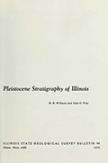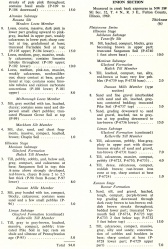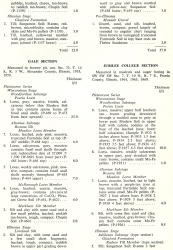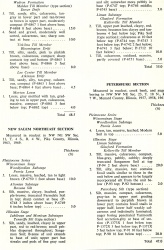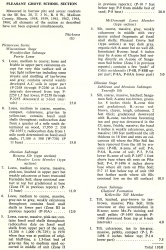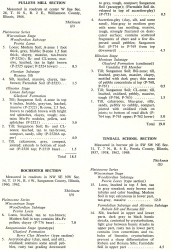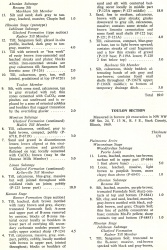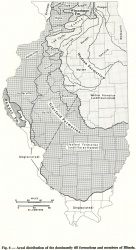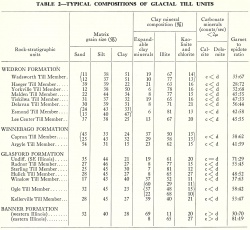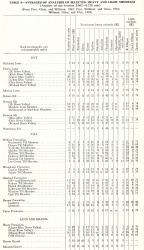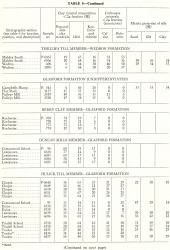Historical:Hulick Till Member
Lithostratigraphy: Glasford Formation >>Hulick Till Member
Chronostratigraphy: Cenozoic Erathem >>Quaternary System >>Pleistocene Series
Authors
H. B. Willman and John C. Frye
Name origin
The Hulick Till Member of the Glasford Formation is named for Hulick School, 1.5 miles southwest of the type section.
Other names
The Hulick Till in part of western Illinois was called Buffalo Hart in previous reports (Wanless, 1957).
Type section
The type section is in roadcut exposures at the Lewistown Section (table 6), SW SE SE Sec. 21, T. 5 N., R. 3 E., Fulton County. In addition to the type section, the Hulick Till is described in this report in the Chapin, Cottonwood School, Enion, Jubilee College, and Tindall School Sections (table 6).
| Table 6 -- Stratigraphic Sections (partial) The following 21 stratigraphic sections describe exposures in Illinois and illustrate many of the aspects of Pleistocene stratigraphy. These sections contain the type localities for 21 rock-stratigraphic units, 4 soil-stratigraphic units, and 3 time-stratigraphic units and include paratypes for several other units. The sample numbers preceded by "P" are the numbers used in the Illinois State Geological Survey collections. Analytical data on many of these samples are on file at the Survey. The sections are arrange alphabetically by name. |
Stratigraphic relationships
The Hulick Member overlies the Duncan Mills or Kellerville Members. It is bounded at the top by the Toulon, Radnor Till, or Berry Clay Members, the Teneriffe Silt, or Pearl Formation; locally, in the absence of these units, the Sangamon Soil is developed in the top of the member. The Hulick is in part stratigraphically equivalent to the Vandalia Till Member of south-central Illinois, but, as its composition is somewhat different and the equivalence of its boundaries has not been established, they are considered as separate members.
Extent and thickness
The member is locally over 100 feet thick in the Table Grove Moraine and in some deep bedrock valleys, but it more commonly is about 50 feet thick. The geographic distribution of the Hulick Till Member is shown in figure 6, and its spatial relations are indicated diagrammatically in figure 7.
Lithology
The member consists of till and intercalated sand and gravel outwash. The matrix grain size and clay mineral composition are given in tables 2 and 5, and the average of heavy mineral analyses is given in table 4.
|
Age and correlation
The Hulick Till Member is within the Monican Substage of the Illinoian Stage. The till was deposited by a glacier of the Lake Michigan Lobe.
References
WANLESS, H. R., 1957, Geology and mineral resources of the Beardstown, Glasford, Havana, and Vermont Quadrangles: Illinois Geological Survey Bulletin 82, 233p.
ISGS Codes
| Stratigraphic Code | Geo Unit Designation |
|---|---|
